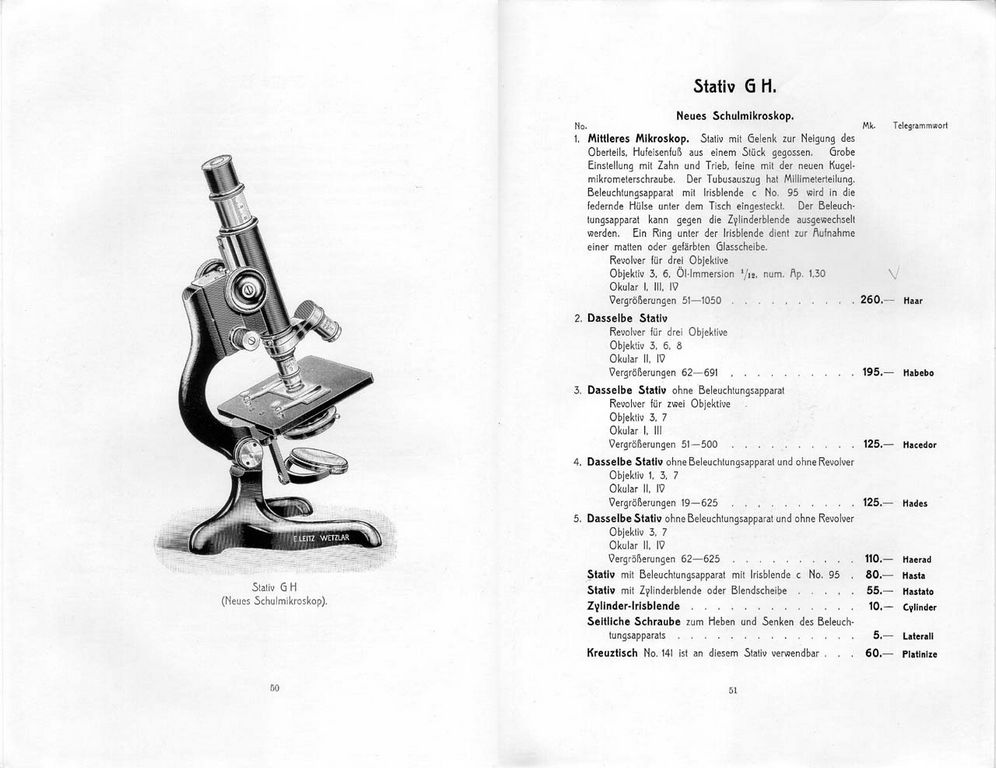
- Ernst leitz wetzlar microscope 1922 24 movie#
- Ernst leitz wetzlar microscope 1922 24 update#
- Ernst leitz wetzlar microscope 1922 24 professional#
Kodachrome on an M2 + Telyt lensīarnack originally conceived the Leica as a tool for his landscape photography but its influence and legacy would be much greater than that. Leica’s current rangefinder models, the film-based M7 (2002) and theĭigital M9 (2009) are both directly descended from the M3. The M3 has been continuously updated over the last 50 years. It would become Leitz’s most popular camera and has been described as the best 35mm camera ever produced – a classic in form and function.
Ernst leitz wetzlar microscope 1922 24 update#
This was no incremental update of their earlier cameras but a revolutionary new design with a new lens system. Introduced at the 1954 Photokina, was the M3. “Barnack's Camera” had become a complete photographic system.Īfter the war Leica was facing increasing competition from not only Ziess in Germany but Canon and Nikon in Japan as well. The original Leica was incrementally updated over the next 20 years – the Leica I was introduced in 1930, the Leica II in 1932Īnd the Leica III in 1933 – and a complete range of interchangeable screw-mount lenses were developed.
Ernst leitz wetzlar microscope 1922 24 professional#
Small size, precision engineering and construction and extraordinarily sharp lenses soon became a favorite of professional photographers in Europe and America. The Leica was introduced at the Lepzig trade fair in 1925. Of course this small negative required an exceptionally sharp lens for adequate enlargementĪnd after several attempts Max Berek, Leitz’s chief microscope developer, created the f/3.5 50mm Elmax lens.Īlthough his advisors warned against it, Ernst Leitz II decided to market Barnack’s design and To create a frame size of 24 × 36 mm and invented the 35mm format. By advancing the film horizontally rather than vertically he was able
Ernst leitz wetzlar microscope 1922 24 movie#
Oskar Barnack, head of development, decided to build something competely different – a portable camera that used 35mm movie film. The Optische Institut von Ernst Leitz, Wetzlar, Germany had a long history of making microscopes and binoculars, but in 1913 Art of PortriatureĪndreas Feininger, The Photojournalist, 1951. Ilse Bing, Self-portrait in Mirrors, 1931. Robert Doisneau, Alfred Eisenstaedt, Andreas Feininger, Man Ray, Leni Riefenstahl, Edward Steichen, even Stanley Kubrick, among many others, all shot with one model or another:

A list of Leica photographers reads like a who’s-who of 20th century masters: Ilse Bing, Robert Capa, Henri Carter-Bression,

Of course he wasn't the only one using a Leica. Rodchenko reportedly purchased the first Leica in Russia and was so strongly associated with the camera that a chapter in his biography is titled simply “Leica Photography.” The beautiful image of his assistant and lover Evgenlia Lemberg, 1 in Gorky Park ca.1934 is perhaps one of his best compositions. Turned photographer Alexander Rodchenko with his Leica I. This silver-gelatin print, Devushka s Leikoi, was taken by the constructivist painter/ designer


 0 kommentar(er)
0 kommentar(er)
